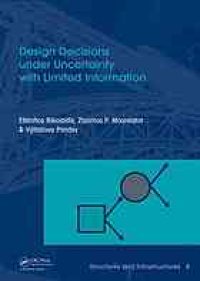''Reliability methods are becoming increasingly popular in engineering design because they help build safer and more efficient products than traditional deterministic methods. A principal challenge in using these methods in practical design problems is to model uncertainty when little data is available and the underlying mechanism of uncertain events is unknown. There is a need for an integrated presentation of tools for modeling uncertainty and making design decisions under severe uncertainty, which bridges the gap between theory and practice for methods for design under uncertainty. This work presents and compare the most important theories for modeling uncertainty and explains what tools are most suitable for a given design problem. It illustrates how to solve practical design problems in the aerospace and automotive engineering industries with a balanced approach explaining both the theoretical foundations of methods and their application to engineering design. The numerous examples in each section will help to appreciate the importance of design under uncertainty and the theoretical developments of the methods. Readers will learn a structured, risk-based approach for design under uncertainty when limited information is available, which tools are available and which to select and apply given a design decision problem. They will further understand how to improve their overall performance using a structured, risk-based approach for design under uncertainty. Intended for mechanical and civil engineers working in aerospace, automotive, civil, shipbuilding and power engineering, and for graduate level courses and students in reliability analysis and design and decision-making under uncertainty''-- Read more...
